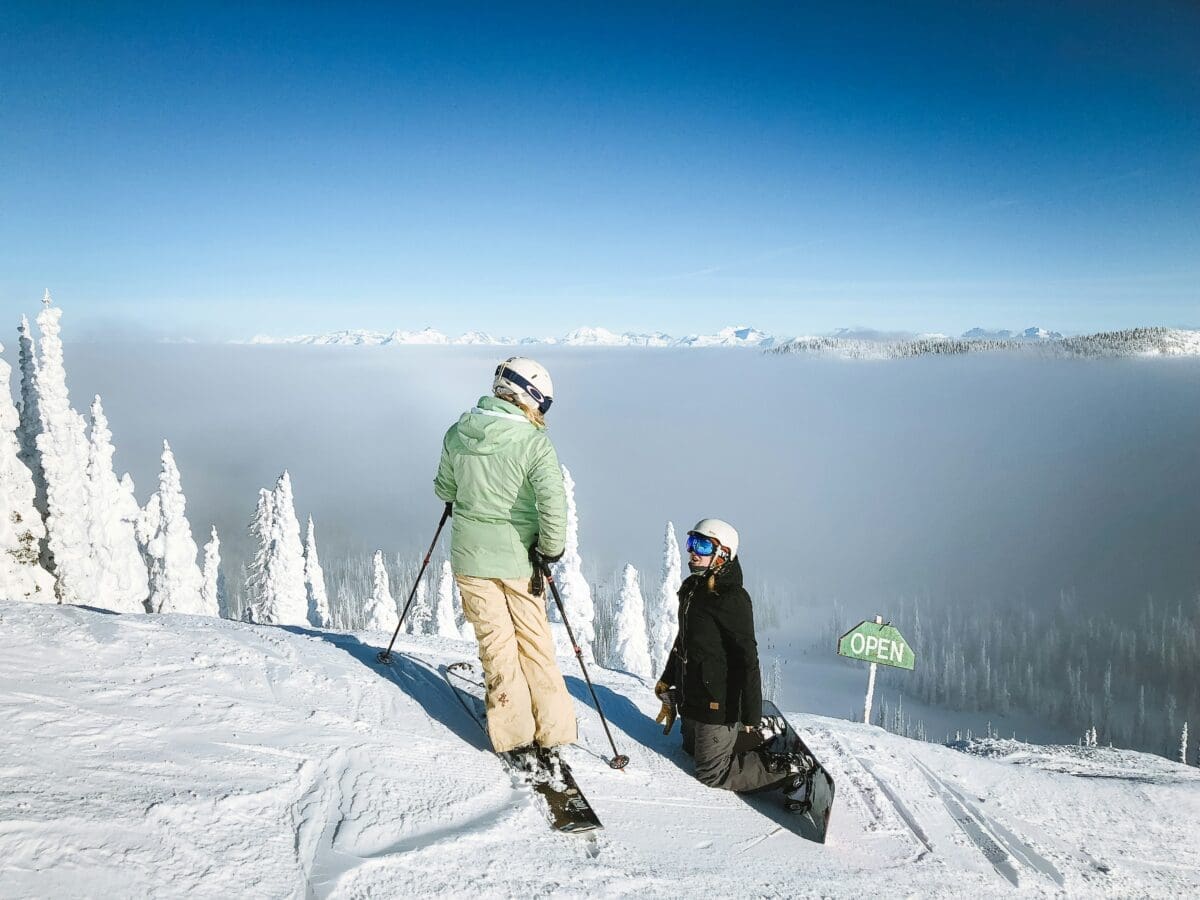
Skiing vs. Snowboarding for Beginners
If you’re just getting into the snowsports groove, there can be one big initial question – To ski or snowboard? Beginners are faced with the super fun and exciting choice between these two snowsliding activities. Each sport presents a unique way to explore and experience the mountains. Here’s a rundown of some different considerations when deciding if you’ll be skiing vs. snowboarding as you develop your winter-in-the-mountains skillset.
Learning Curve
Initial Challenges
As a general rule, albeit one many a skier or snowboarder might argue, skiing can be easier to pick up, but harder to master in the long run. Alternatively, snowboarding’s reliance on edging can make it a trickier sport to grasp in the beginning, but once you do, the mountain becomes your oyster a little faster.
In those initial days, two separate sticks on your feet can be easier than one. Skiing as a beginner allows for more freedom of movement if you fall or need to counterbalance, whereas snowboarding requires full body awareness as you start to arc the board downhill. The falls in those first days of snowboarding are harder, and sometimes more defeating, as a result. Skiers can fall onto their side, or brace with a pole, arm, or hand. Snowboarders tend to topple front or back without as much potential to break the fall.
Basic Techniques and Movements
A skier moves down the mountain in a forward-facing position, which allows for unobstructed peripheral vision. Once a skier has learned the basics of starting and stopping, they can begin to incorporate edging and angling of the skis, most frequently explained to newbies as “french fries” (skis in a parallel position) or “pizza” (ski tips together, backs apart to allow for speed control).
This parallel-to-triangle movement allows beginner skiers to move through a turn, starting with parallel skis as they cross the mountain before transitioning into a pizza shape as they turn their skis down and across to the other side, then back to parallel. Eventually, skiers will be able to ditch the pizza and focus on parallel turning.
Alternatively, snowboarders face side-on, which means they can only typically see one half of the slope. This limited field of vision requires more spatial awareness. However, once a snowboarder becomes accustomed to this new way of seeing what’s around them, getting down the mountain becomes pretty easy. Snowboarders don’t have to worry about common early skier hang-ups, such as crossing their tips. They can gain speed pretty quickly.
While a skier’s upper body remains relatively steady throughout the turn, a snowboarder learns to lead the turn with the head and shoulders. This eyes-first approach guides the rest of the body through the movement until eventually, linking turns becomes a fluid motion.
Equipment
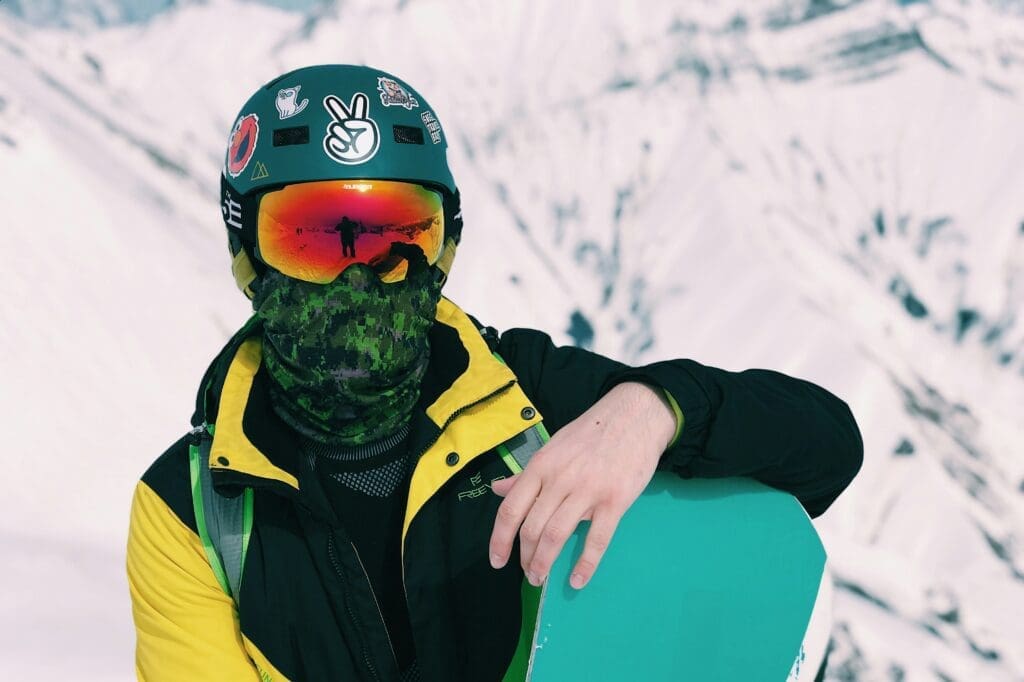 Both sports require a few essentials, and then there are additional pieces of clothing and ski and snowboard equipment that can make the sports more comfortable and enjoyable.
Both sports require a few essentials, and then there are additional pieces of clothing and ski and snowboard equipment that can make the sports more comfortable and enjoyable.
A basic ski setup includes:
- Skis and poles – ski length and style will vary depending on ability level and terrain
- Boots and bindings – Do yourself a favor and have the shop fit your boots to your feet once you decide to purchase!
- Protective gear including a helmet and goggles or sunglasses
- Outerwear – jacket, snow pants, and mittens or gloves
- Baselayers and ski socks
Beginner snowboarders will need:
- Snowboard
- Boots and bindings
- Protective gear
- Outerwear
- Baselayers and ski socks
In addition to the obvious two-versus-one snowsliding vessel, ski and snowboard boots and bindings also differ. Ski boots are hardshell while snowboard boots are softshell (and therefore much more warm and comfortable). Skiers click into bindings with the toe and heel of their boot, while snowboarders typically buckle into bindings that brace the height of the boot.
Physical Demands
Physical Fitness
So, which sport is more physically demanding? It’s tough to say, and like any sport, each requires the use of specific muscles. Skiers tend to rely on their quads and legs as they raise and lower their body throughout the course of a ski turn. Snowboarding utilizes a more holistic body approach, with, again, the head, shoulders, and core engaged throughout the turn.
For both sports, it’s best to do some basic conditioning before you hit the slopes to maximize your enjoyment and help avoid injury. Cycling, hiking, biking, pilates, and running are all excellent options. Common strength training exercises such as lunges, wall sits, abdominal exercises, and calf raises are also great ways to condition the body for learning to ski or snowboard.
And don’t forget one of the most essential aspects of learning both sports – balance. Working on your balance before you go skiing or snowboarding for the first time will make it easier to grasp the initial concepts.
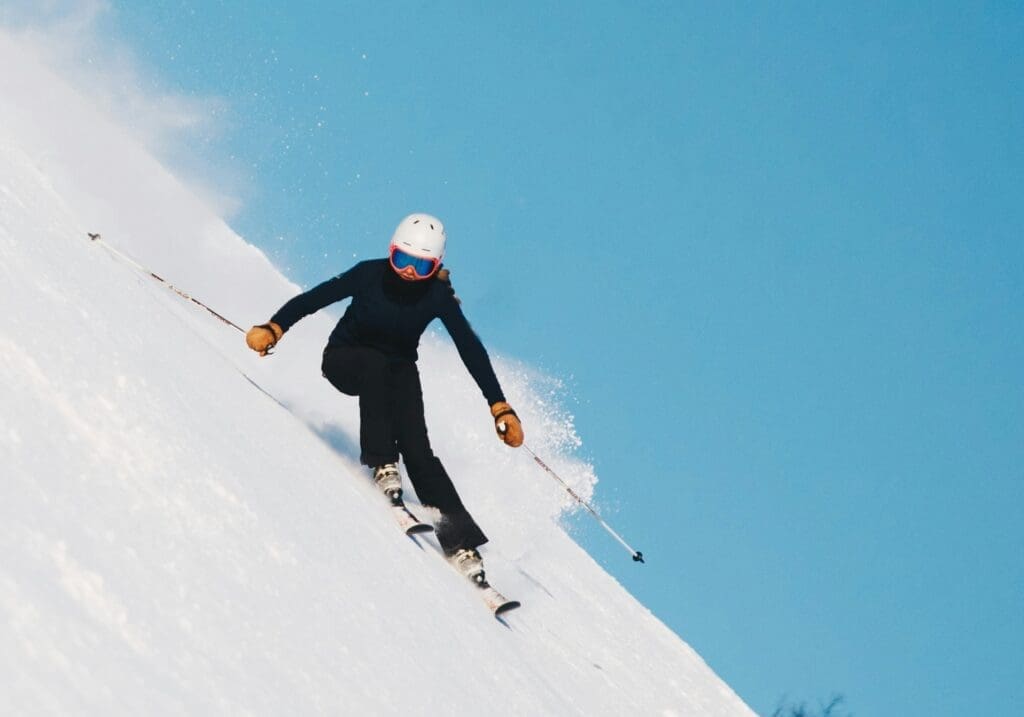
Common Injuries
Like any athletic endeavor, both skiing and snowboarding come with a list of common injuries – just one more reason to make sure your body is ready before you click into your skis or strap into your snowboard.
Common ski injuries include:
- Thumb injuries often as a result of pole straps
- Shoulder dislocation
- Knee injuries
- Head injury – always wear that helmet!
- Broken leg
- Achilles tendon injury
Common snowboard injuries include:
- Sprains and strains
- Knee injuries
- Ankle injuries
- Head injuries
- Shoulder dislocation
- Concussion
If you’re venturing onto the mountain without an instructor or guide, make sure you jot down the ski resort’s ski patrol contact number somewhere accessible. Ski patrollers typically wear a version of red and black jackets that feature a white cross.
Cost Considerations
Don’t be deterred by the cost of that brand new set of skis or snowboard in the window of your local shop. Getting into skiing or snowboarding can be relatively affordable.
Entry-level costs to consider include:
- Equipment rental
- Lift tickets or passes
- Lessons or training
- Transportation to and from the mountain and parking
When you’re just getting into the sport, renting equipment is a great way to test the waters before you make any significant purchases, or plan to visit your local ski swap at the beginning of the season. Inquire about multi-day rental packages or early season discounts.
This also applies for lift tickets and passes. Many resorts offer discounts for multi-day ticket bundles (great for that family ski vacation!). If your local mountain is part of a multi-resort ski/snowboard pass collective, a pass can sometimes be cheaper than buying daily tickets if you anticipate skiing 10 days or more per season.
Terrain and Conditions
Best Types of Terrain for Beginner Skiers
If you’re just learning how to ski, it’s best to find groomed, low-angle terrain. Many ski hills and resorts offer beginner-friendly slopes and lifts. A magic carpet zone is a great place to start. A magic carpet is a conveyor belt-style way of moving up the mountain that doesn’t require getting on or off a chairlift, which can be an intimidating aspect of learning the sport.
Ski resorts utilize a rating system for slopes: green circles are beginner terrain, blue squares are intermediate, and single and double black diamonds are for experts. Once you’ve conquered the learner lifts, bunny slope, or magic carpet, look for other beginner-level lifts and slopes. In addition to groomed terrain, beginner slopes should never be too steep or have too many obstacles, such as terrain parks, dense trees, or moguls, all of which can be challenging for those who are new to the sport.
In addition to terrain, snow conditions are important to consider. While plenty of snow makes for a great base, learning to ski in powder or off piste is difficult and discouraging. Trying to get a hang of things in heavy snowfall or very cold and windy conditions can also be trying. Opt for a relatively temperate day, saving the powder skiing for a little later in your ski trajectory.
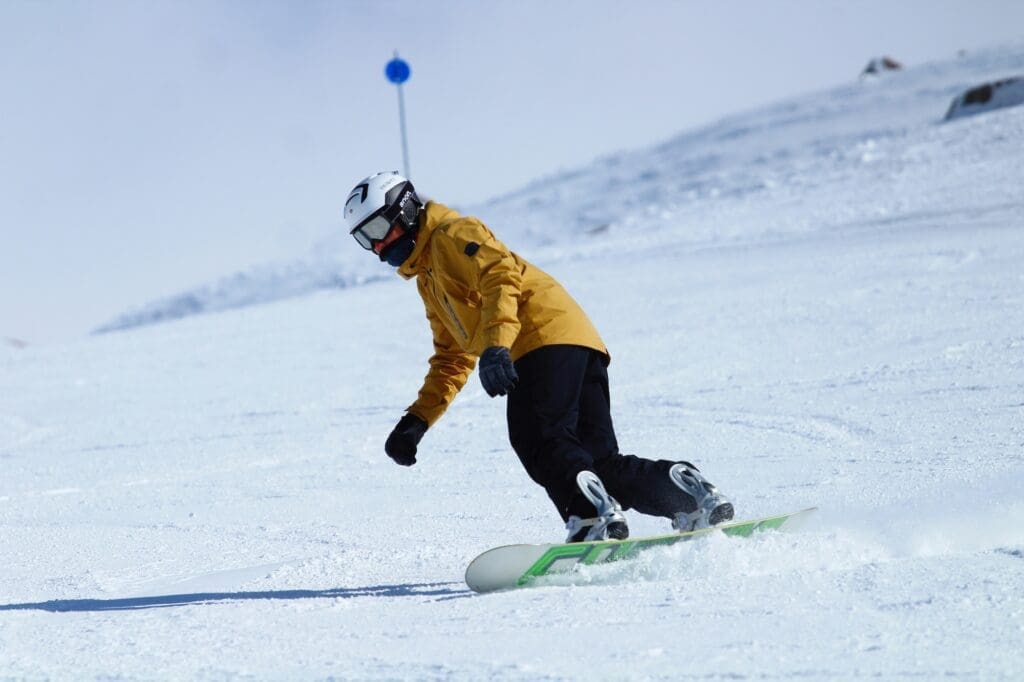
Best Types of Terrain for Beginner Snowboarders
Similar to skiing, snowboarders benefit from learning on groomed, low-angle terrain. However, the difference is that snowboarders actually require a bit more speed in those early days as they can’t rely on poles or shuffling their feet to move down the mountain.
Magic carpets can be trickier for snowboarders given the sideways stance. Beginner chairlifts typically utilize short, slow-moving chairs and low-angle offramps that make it easier to get on and off, but don’t be discouraged if you fall those first few trips on the chair.
Like skiing, learning to snowboard is best on days when it’s not snowing heavily and snow isn’t accumulating on the slope or getting pushed into large bumps that can be difficult to navigate.
Skiing Pros and Cons
It’s hard to think of cons when it comes to any snowsport, but if you’re playing the skiing versus snowboarding game, it’s important to consider some of the challenges of each.
Pros:
- Skiing can be the easier of the two to learn.
- It’s nice to have the ability to move both legs in different directions if you need to.
- Skiers enjoy greater peripheral vision.
- It’s nice to have poles when you hit the flats!
Cons:
- Skiing can be more difficult to master in the long run.
- Some might argue skis don’t glide over tricky conditions, such as clumpy, variable snow, as well as a snowboard.
- Ski boots can be, how shall we say, less than comfy.
Snowboarding Pros and Cons
Again, it’s tough to find any reason not to learn either of these great winter skills, but if we must, here are the upsides and downsides of snowboarding.
Pros:
- Becoming a master of the craft can be easier once you have the basics dialed.
- The surf-style board plows through all sorts of snow easier than skis can.
- Snowboarding boots are a whole lot more comfortable than ski boots!
Cons:
- Learning a new sport when you can only see roughly half of the hill can be tricky.
- Those first falls on a snowboard can hurt.
- Trying to snowboard on mountains with lots of cattracks or flat spots requires a fair amount of hopping out and back into bindings.
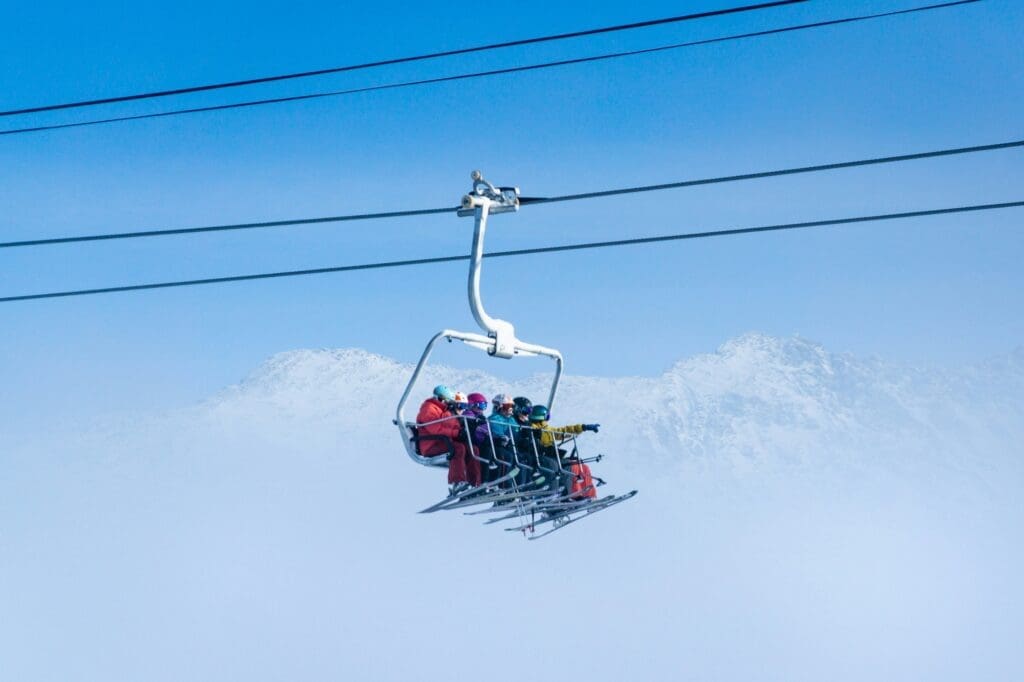
Conclusion
If you’re deciding if skiing or snowboarding is for you, it really comes down to personal preference, personal style, and which sport better suits your abilities and the mountain where you’ll be learning and riding. If you’re not sure, stop by your local Black Tie Skis location and chat with people who have been at it for a while, or talk with the local instructors or guides to get a better idea. Regardless of which path you take, you’re sure to be whooping and hollering down that hill in no time.